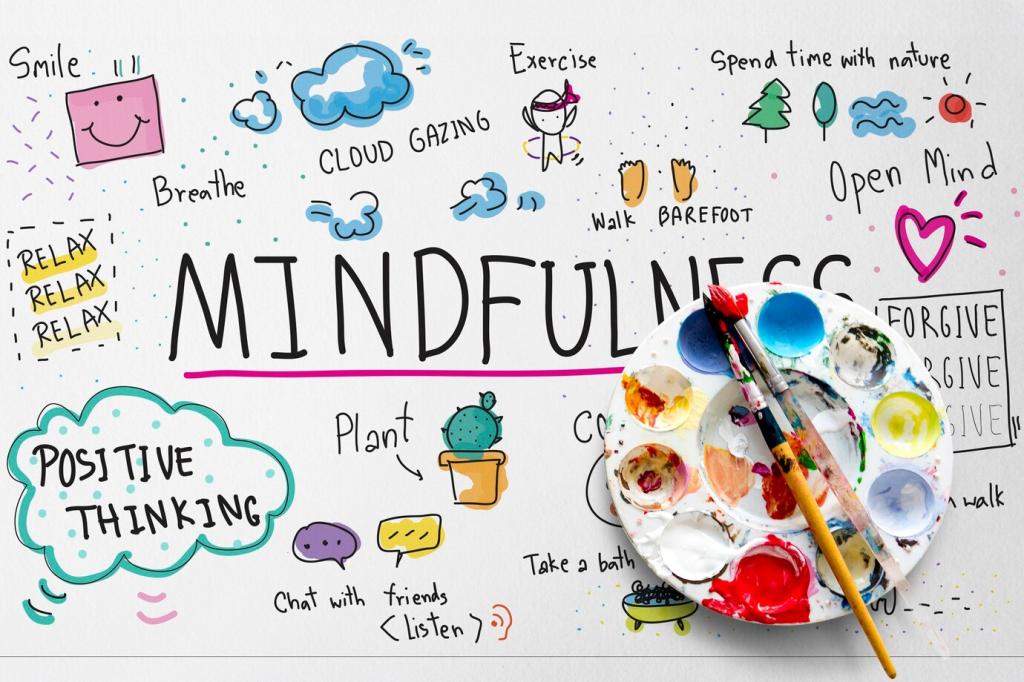
Create Mindful Journaling Habits That Last
Chosen theme: Creating Mindful Journaling Habits. Welcome to a gentle, practical space where your notebook becomes a daily anchor for presence, clarity, and compassion. Let’s design a simple ritual that fits your real life and invites you back to the page with ease.
Why Mindful Journaling Matters
Attention as a daily muscle
Mindful journaling trains attention the way a morning stretch awakens muscles. Studies on expressive writing suggest reduced stress and clearer thinking, while the act of noticing gently rewires your brain toward presence, patience, and kinder self-talk throughout the day.


Attach journaling to a stable cue you already do—coffee aroma, a commute pause, or brushing teeth. A two-minute check-in after that cue lowers friction, builds identity, and makes returning to the page feel natural, even on unpredictable days.

Place your journal where you can see it, alongside a favorite pen, soft light, and perhaps a comforting scent. This small environment signals safety and intention, helping your nervous system settle so mindful journaling feels like a treat, not a task.

Morning entries invite direction and focus; evening entries integrate lessons and release tension. Try both for a week, compare energy and mood, and choose the time that supports creating mindful journaling habits without strain or perfectionistic pressure.
Techniques for a More Mindful Page
Body-scan journaling
Before writing, scan from crown to toes and note sensations: warmth, tightness, lightness, restlessness. Translate those signals into simple statements. This bridges mind and body, grounding your mindful journaling in present experience rather than drifting into abstract narratives.
Breath-paced sentences
Inhale, write one slow sentence. Exhale, pause and notice. Repeat for five cycles. This cadence brings your nervous system into the experience, synchronizing breath and words so creating mindful journaling habits becomes a calming rhythm rather than another checklist item.
Sensory detail over judgment
Describe what you see, hear, smell, taste, and feel in concrete terms. Sensory language reduces inner criticism and anchors awareness. You shift from evaluating yourself to experiencing the moment, which is the heart of mindful journaling and compassionate self-attention.
Prompts That Cultivate Presence
List three specific gratitudes with sensory detail: not just “coffee,” but “the cinnamon warmth rising from my mug.” Specificity invites your mind to linger, turning a quick list into a mindful journaling moment that deepens appreciation and everyday joy.
Prompts That Cultivate Presence
Set a timer for sixty seconds. Describe your inner weather exactly as it is—overcast, breezy, sunlit, stormy—without fixing anything. This tiny practice normalizes feelings and makes returning to mindful journaling feel safe, honest, and refreshingly judgment-free.


Overcoming Common Roadblocks
Perfectionism, meet the timer
Set a two-minute timer and write the messiest first line you can. Celebrate completion over elegance. When perfectionism softens, creating mindful journaling habits shifts from intimidating performance to playful practice that grows naturally with repetition and kindness.
No time? Shrink the ritual
If ten minutes is impossible, do ninety seconds. Capture one breath, one feeling, and one intention. Consistency beats duration. You will be amazed how such small pages compound into clarity when practiced gently across ordinary, imperfect weeks.
Blank page anxiety antidote
Start with a template: “Right now I notice…,” “My body says…,” “One helpful next step is….” Templates reduce cognitive load, letting mindful attention flow. Over time, the page becomes familiar ground rather than a silent, pressuring space.
From Page to Life
Weekly reflection loop
Each week, skim your entries and highlight three ideas to keep, three to release, and one experiment to try. This simple loop turns mindful journaling into action, connecting insight with behavior in small, sustainable, values-aligned steps.
Communicating with clarity
Use a journal draft before difficult conversations. Write what matters, what you fear, and what you request. Creating mindful journaling habits strengthens communication by clarifying needs, softening reactivity, and making space for empathy on both sides.
Spotting energy-giving patterns
Mark entries where you felt energized, calm, or creative. Track the conditions around them—sleep, environment, people, timing. These patterns guide smarter planning so your calendar reflects what truly supports you, not just what shouts the loudest.

